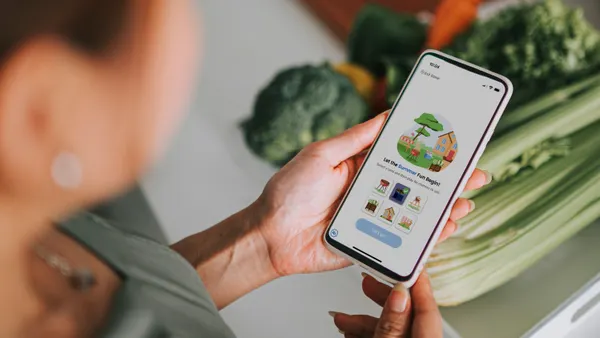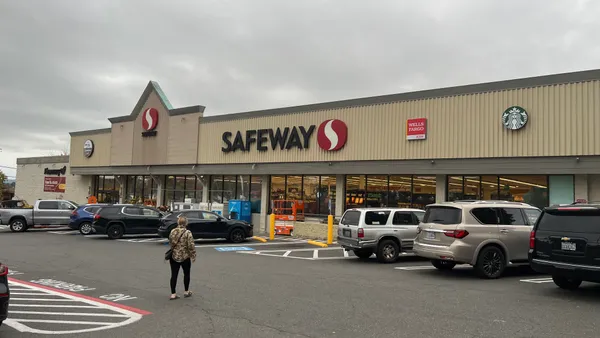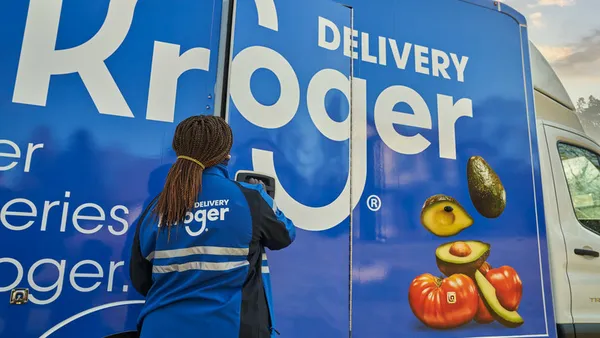Just a few years after online startup Weee launched with a mission to become the top grocer for Asian consumers in North America, the fast-growing California-based e-grocer has set its sights on a larger goal: becoming the one-stop shop for food across ethnicities.
In pursuit of that vision, the company has made several changes during the pandemic, particularly in the last 12 months. The company added Hispanic food to its assortment, expanded to 40 states and Washington, D.C., and tripled the total number of orders fulfilled from nearly 5.2 million last October to more than 15.7 million. It also made several executive hires with experience at top companies like Instacart, Netflix, Walmart and Tesla and bought Ricepo, an online Asian food delivery company.
As the self-described "leading ethnic e-grocer in the U.S." forges ahead, its growing assortment of hard-to-find ethnic food, social commerce strategy and e-commerce model are key strengths, said Amanda Oren, a former Grocery Outlet executive who joined Weee this summer as vice president of merchandising services and planning.
The company has identified several key growth verticals, including expanding its customer base, especially among second- and third-generation shoppers; arriving in more locations around the country; increasing fresh and frozen shipping capabilities; and expanding its appeal across ethnicities.
During Weee's growth spurt, competition has heated up in the online Asian grocery space, and shoppers have headed back into stores. That's putting pressure on online-only grocers to recalibrate their growth trajectories while also satisfying investors' demands. In March, Weee brought in $315 million in a Series D round, bringing its total funding raised to more than $435 million since launching in 2017, per Crunchbase
Weee's basket sizes have declined slightly, mostly due to shifts in the makeup of its customer base, which has grown with second- and third-generation shoppers, Oren said. Like other grocers, Weee has seen costs rise due to inflation and faces the "ongoing" challenge of recruiting workers in a tight labor market, she noted.
Changing assortment, changing customer base
With the addition of Hispanic groceries and plans to eventually branch into more ethnic cuisines, Weee is seeing a gradual evolution in its customer base.
Over the last few months, the e-grocer, which offers shopping in English, Chinese, Korean, Japanese, Vietnamese and Spanish, has seen more customers shopping in English, Oren said — an indication that its customer base, which is still primarily Asian, is expanding beyond first-generation shoppers to second- and third-generation shoppers, who are people born in the U.S. and more likely to speak English.
Weee is focused on depth instead of breadth of assortment as it adds ethnic cuisines, with a focus on finding products that will appeal to target consumers within each ethnic group. But the e-grocer has had its fumbles, like forgetting to initially add a category for tortillas, Oren said.
Weee is seeing overlap with products between Asian and Hispanic products, like cilantro and limes, Oren said, noting that Hispanic and Filipino cuisines have similar ingredients and flavor profiles. Some products, like lechón, a pork dish Filipinos eat during the holidays, are more closely linked to one or a few ethnic groups, while others are "ethnic-friendly," Oren said, adding the e-grocer is also adding more of a "mainstream" assortment as well.
“We really want to get these two right before we move to another area, but I think the next one would probably be for South Asian to start blending into Middle Eastern.”
To make it easier for customers to find specific products or shop within ethnic groups, the e-grocer recently added digital storefronts on its app and website, including Korean, Chinese, Filipino, Vietnamese and Japanese. Currently, the storefronts are based on the zip code the customer enters. Shopping with a Los Angeles zip code, for example, also includes storefronts for Mexican, Indian and American cuisine in addition to the five others.
Weee is also thinking beyond groceries, and its recent acquisition of Ricepo, which works with mom-and-pop Asian restaurants in the San Francisco Bay Area, is part of the e-grocer's vision of being the go-to food delivery company for all ethnic customers, Oren said.
Weee is in the process of integrating Ricepo into its app and aims to create a "seamless" experience for customers to order meals and groceries at the same time.
Leaning into online-only
Brick-and-mortar has long been the bastion of grocery shopping, and omnichannel shopping is gaining traction among major retailers like Walmart and Kroger. But Weee sees its online-only presence as an advantage now and in the future, Oren said.
Oren said the company's integrated supply chain, with its own workers picking and packing at warehouses and then delivering orders, reduces costs. Weee has previously pointed to its scheduled delivery model as a way to improve delivery efficiencies.
This year has seen the rise of delivery in 30 minutes or less in the U.S., but Oren said Weee is not feeling pressure to speed up its operations and is sticking with its next-day delivery service, which is free for orders over $35.
In a telling example, Oren said Weee's sales are growing in New York City, the current major U.S. battleground for ultrafast delivery. While there are new e-grocers focused on Asian cuisines and delivery is available from Asian grocery chains, online shoppers in the city still have limited access to authentic Asian groceries, Oren noted.
"In New York City, most Asian customers do not live within a 10- to 12-minute drive from a 99 Ranch or an H Mart, so we are experiencing tremendous growth in that region as a result," Oren said.
Weee currently reaches about 30% to 40% of the U.S. and aims to reach the 80% to 90% range in 2022, Oren said. "In terms of geographic expansion, we are still focused on locations with higher Asian density," she noted.
Weee currently has seven U.S. warehouses that carry all products — fresh, frozen, produce and dry goods — and plans to open its eighth in January.
“We are looking to figure out, 'How can we expand the reach of each one of them and how many more do we need basically, so that we can have reach right now?'” Oren said, noting that the e-grocer recently hired someone to oversee network optimization to improve distribution.
Social sells
After soaring in China and emerging in other parts of Asia and in Southeast Asia, social commerce is gaining traction in the U.S. Weee's origins are connected to group buying through WeChat, a Chinese messaging and social media app, and the e-grocer still heavily relies on social commerce to grow and develop its customer base, Oren said, noting that the vast majority of its shoppers use Weee's app.
Weee is leveraging user-generated content on its app, which includes recipes and videos of people cooking. These not only encourage customers to interact with each other, but also help educate consumers, like its growing second- and third-generation shoppers, who Oren said may be less familiar with how to prepare certain dishes or use certain ingredients.
But Weee still has more work ahead to encourage richer content, Oren said.
“Right now we have a lot of content and people kind of opening a box and talking about how they're excited about what they got. We don't have much contact content yet around actual people cooking and recipes and such, but we're moving in that direction," she said.
With order sharing, which launched in the early summer, people can send each other a list of what they ordered and if someone orders from that list, then they get a discount, while the original customer gets Weee points.
"People are much more enticed by that than having to start from scratch on their own. And then people are also very enticed by the financial rewards," Oren said.
Weee's reliance on social commerce means most of its customer acquisition is organic, primarily through referrals, Oren said, noting that Weee's referral bonus, which gives people Weee points when they bring on new customers, "leads to a tremendous amount of new customer acquisition."
"We're just trying to get what Larry [Liu, Weee's co-founder and CEO,] calls 'the social flywheel' going where people are excited about the product and sharing their excitement with others and that goes viral," Oren said.












